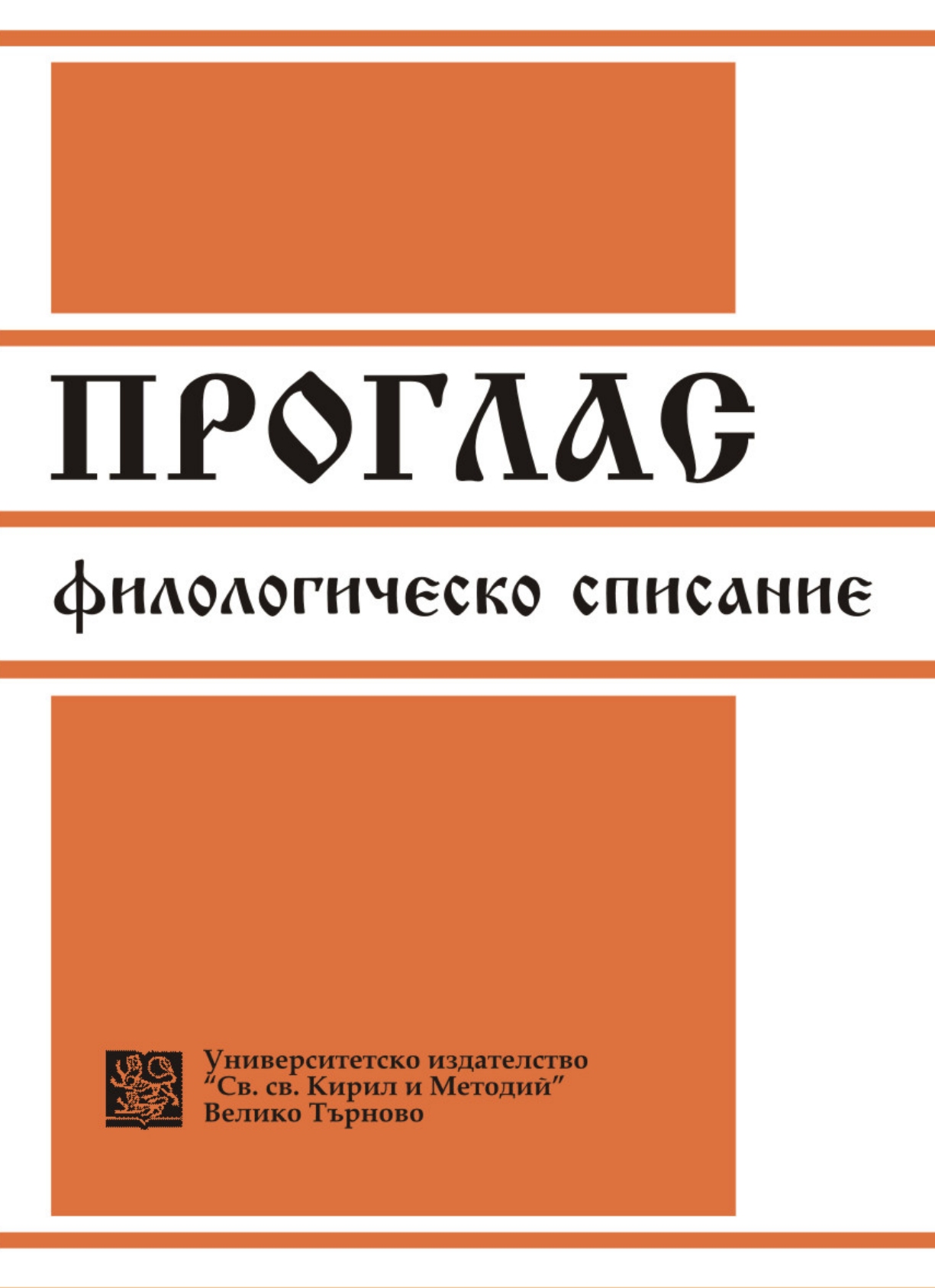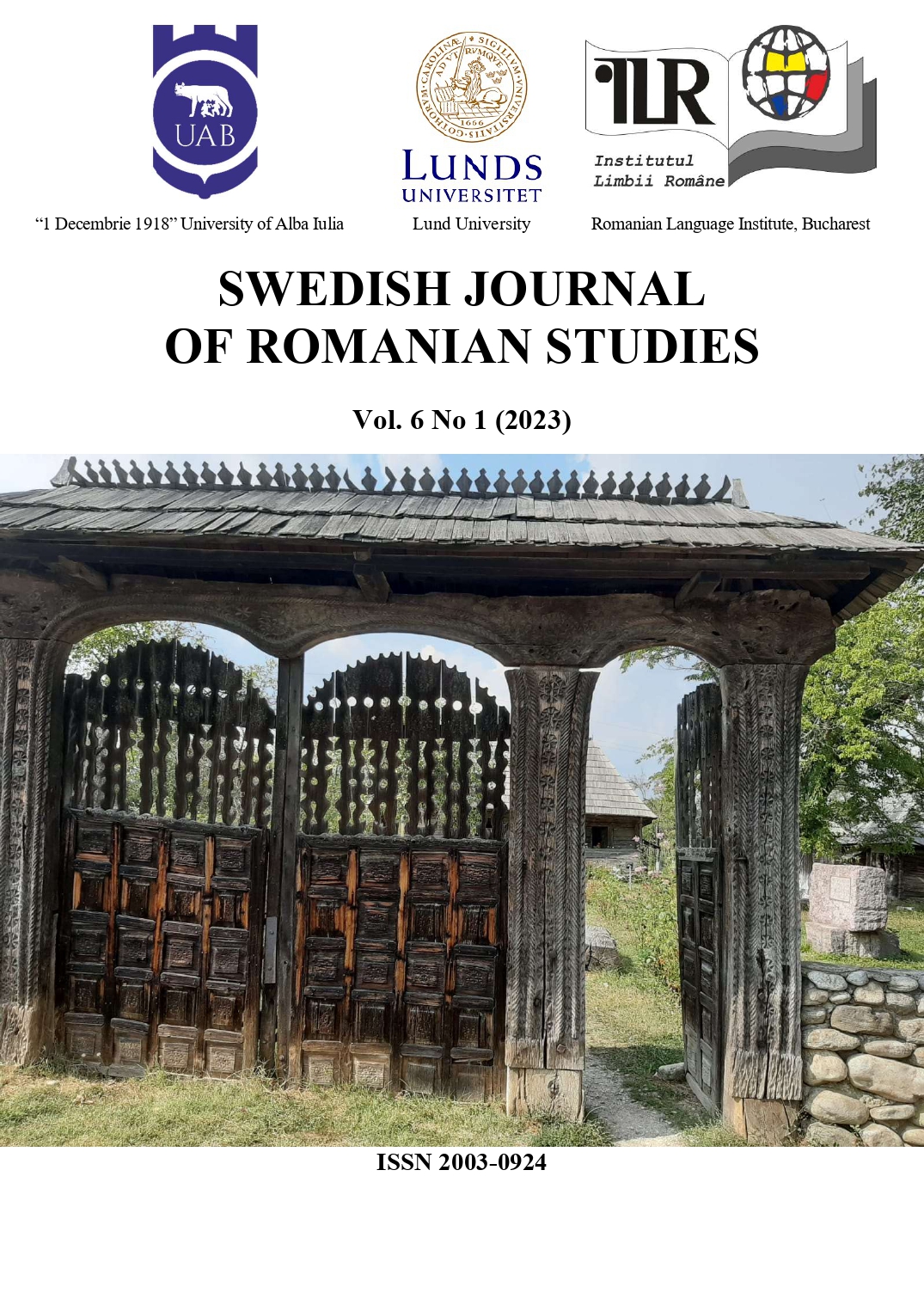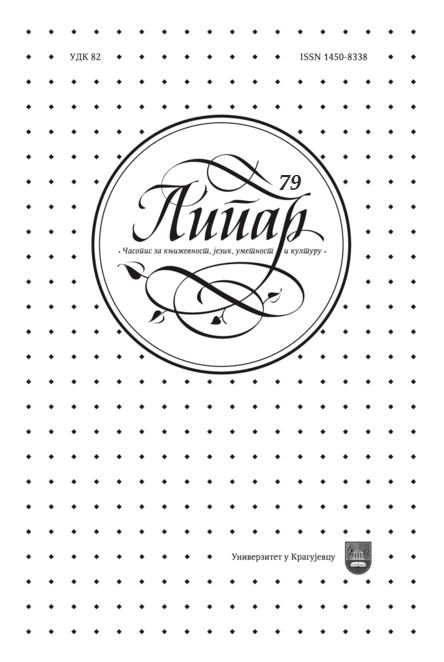
We kindly inform you that, as long as the subject affiliation of our 300.000+ articles is in progress, you might get unsufficient or no results on your third level or second level search. In this case, please broaden your search criteria.


The object of investigation in the present paper is the comparative study of the temporal system in translated and original works of Tarnovo and non-Tarnovo origin from the 14th century, published in the last decade. The study focuses on the parallel between the verbal system of the largely unresearched pre-Euthymian homiletic manuscript of six homilies “On the Seraphim”, translated by Dionysius Divni, and six works of the representative of TarnovoLiterary School – Metropolitan Gregory Tsamblak, which are genealogically connected with it. The following aspects have been studied contrastively: the paradigm of the verb tenses – Present tense, Past Imperfect, Past Aorist, Past Perfect, Plusquamperfectum, Future Simple, descriptive future-tense forms, Past Future tense; the unchanging infinitive; the verboids – present active participle, aorist active participle, passive participles; passive voice; conditional and imperative mood. Their similarities (conformity to Middle Bulgarian tendencies and Athonite influences) and differences (the degree of archaisation, individual style) have been inspected.
More...
The aim of this study is to present, based on the Rom. ms. 312 from the Academy Library in Bucharest, the teaching material used by a teacher of Slavonic in the second half of the 17th century. Rom. ms. 312 BAR is well-known particularly because it contains the largest dictionary belonging to the group of the first bilingual Romanian dictionaries. The elaboration of these dictionaries should be considered in relation to the political and cultural context of the reign of Matei Basarab, in a period in which Wallachia was influenced by the cultural prestige of Kyiv and of the metropolitan Petru Movilă, who influenced the cultural development of the Romanian Principalities. Matei Basarab wanted to restore the dominance of the Slavonic language and culture, by encouraging the development of schools, among other measures. The necessary linguistic tools were provided by Kyiv, namely the Slavonic-Ruthenian lexicon and Meletius Smotrytsky’s Slavonic grammar (1619). These tools, besides being used as such in schools, provide models for the first Romanian dictionaries and the first Slavonic grammar translated into Romanian. Six Slavonic-Romanian dictionaries have survived, all written in the second half of the 17th century (except for one dating from 1649) in Wallachia, based on the Slavonic-Ruthenian lexicon published by Pamvo Berynda in 1627, which these six works adapted both in terms of the number of entries and the content of the Romanian definitions. Except for the lexicon issued in 1649, the others seem to be modified copies based on a single version. Two manuscripts containing the first Romanian bilingual lexicons also include copies after the same Romanian redaction of the Slavonic grammar. The Rom. ms. 312 comprises the lexicon, part of the grammar, and other lexicographical components, organized as additions to the main word lists. There are several studies on the content of Rom. ms. 312, yet previous research only presents it from a general perspective without much detail on its components. We shall demonstrate that its content is also more complex than that of the other lexicons, indicating and presenting its parts: the first list of words taken from the Slavonic-Ruthenian lexicon; a second list which is independent of it, but which can also be found in three of the other lexicons included in the group; three thematic lists and two lists without a specific theme, plus a dictionary of proper names translated into Slavonic, which has never been studied. Furthermore, we also present opinions on the author of the grammar included in this lexicon. A comparative analysis of the Slavonic grammar of Rom. ms. 312 and the one in Rom. ms. 3473 from the Romanian Academy Library allowed us to advance the hypothesis that these are copies of a previous writing, which was not preserved.
More...
The hereby offered article points out some strokes from the revival epistolary theory that is presented on the pages of the letter-writing manual “Slavenobolgarskiy predruchniy poslatelnik za nastavleniya na bolgarski yunoshi” (1835) by Neophyte Bozvely nad Emanuil Vaskidovitch. The main target of the following research is the philological insight of the two teachers from Svishtov in the aspects of soundness of language and its stylistic perfection, and their following instructions concerning the writing of good and proper letters. Following the basic beliefs of the European Enlightenment and especially the correlation between the right, the virtuous and the beautiful, Bozvely and Vaskidovitch are constructing their own concept about the language and style of the letter by planting the two principles: “Write good when you do” and “Write just as you speak”. Under the banner of these two absolutes the coauthors introduce the stylistic demands for brevity, simplicity, aptness and beauty of language.
More...
The proposed research article aims to explore the social aspects of Ukrainian anthroponomical stock in 17th and 18th centuries which concerns Polish female representatives of the most privileged class in old Ukraine. It presents and describes their baptismal names, additional identifiers and personal identification formulae (naming styles), which were a language measure for the social differentiation.
More...
This article deals with the forms of Christian names used by Marispeaking people in the Middle Volga region. It provides a general picture of the phonetic modifications made in Mari versions of Russian Christian names when they were adopted. At the beginning of article information is given on Russian-Mari contacts and the development of the Orthodox religion on Mari territory. The author reveals phonetic mechanisms of adaptation, which enabled Christian names to be integrated into the onomastic system of the Mari language. The data of adopted personal names used in analysis is not exhaustive; it does, however, allow one to show certain phonetic inflections in adopted names. Part of the phonetic modifications are systematic and some appear inconsistent while even others can be taken as individual cases.
More...
In the article onomastic means of creating an artistic image of the city are investigated in the work of Olga Pressitch, an Ukrainian-Canadian poet. There is determined, that central city in her creativity is the capital of Ukraine – Kyiv. This is typical for emigration poetry as a manifestation of self-identity. The image of the city is portrayed primarily through toponymic names of streets, buildings and so on. It is revealed that in Olga Pressitch’s lyrics world and place names are also presented, that helps to demolish the image of the motherland into the global context.
More...



The paper uses life stories and archival evidence to explore the relations between Macedonian and Greek refugee children who escaped the violence of the Greek Civil War and grew up in children’s homes in Eastern Europe. More in particular it examines the dominant role of the Greek Communist Party on the refugees’ lives, the organization of Macedonian-language education and the tensions created by the anti-Tito campaign launched by the Cominform countries. It discusses the short-lived establishment of an autonomous Macedonian organization in Poland during the early 1960s. And finally, it analyzes the oral memories of both Greek and Macedonian refugee children about their mutual – largely harmonious - relations. The paper argues that the recovery of such memories in light of contemporary conflicts between the two countries might be an important resource for the future.
More...




Review of: Camelia Dinu (ed.), Simbolismul în literaturile slave, București, Pro Universitaria, 2020, 263p., ISBN 978-606-26-1233-7
More...
Pronouns are an excerpt of grammaticalization, its linguistic explication. The paradigm of pronouns and its logical functionality in the invariable relationship with their prototypes, where first and foremost together with that stands the self as the autonomy of the cognitively tempted and devoted to this selfconsciousness, makes sense of grammaticalization as a mechanism of categorical extension.
More...
Dr. Botyu Shanov's German textbook is a contribution to historical studies of foreign language teaching in Bulgaria; it provides important evidence reflecting to a considerable extent the major problems of Bulgarian linguistic didactology in the first half of the 20th century and it can be interpreted with regard to the goals of numerous studies in the vein of modern linguistic didactology. The textbook comprises 33 lesson units which introduce students to “traditional” elementary level topics: the classroom and objects in everyday school life, color terms, some character traits, clothing, numbers, etc. The textbook also provides a general overview of basic elements of German grammar in the form of short unit notes.
More...
The concept of “fool” in the Bulgarian and the Russian linguistic picture of the world is associated with the character of the jester, joker, the clown, the idiot, the eccentric, the moron. The numerous linguistic units with the word “fool” outline its ambivalent place in the two linguistic pictures of the world.
More...
This paper considers the models of transferring other people’s speech in David Albahari’s novel Leeches from the stylistic point of view. The aim of this paper is recording and illuminating the stylistic effects of different types of transmission of other people’s speech. By using analytical-descriptive methods in the novel, the following are recognized: real indirect speech, introduced free indirect speech, frag- mentary indirect speech, basic (grammaticalized) type of direct speech, semi-indirect speech, indirect expressive speech, and direct non-connector speech. In various contexts they depict the conversations of the novel’s characters.
More...